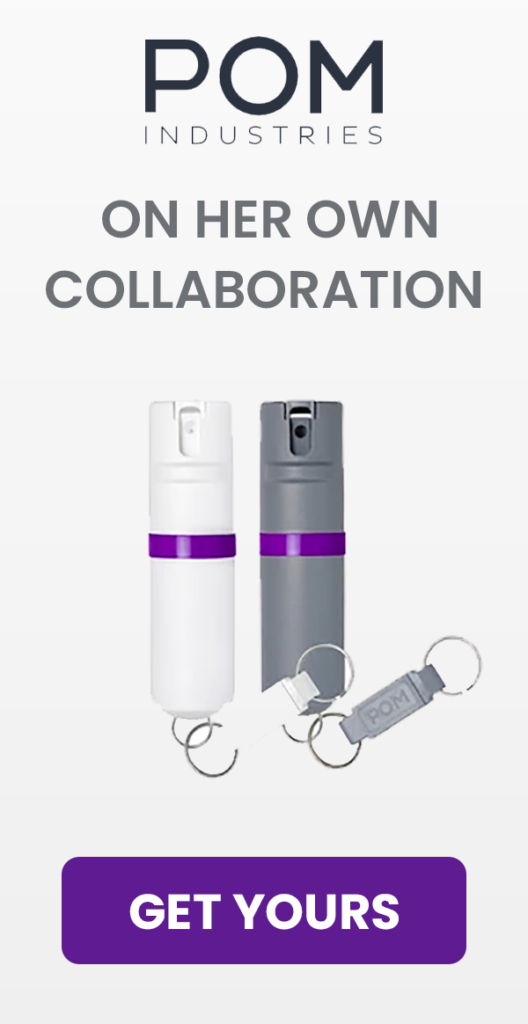
We’ve spent a lot of time lately talking about the kinds of self-defense training and mindset that can and can’t keep you safe. The skills you have and the ways you think are not the only factors in what I like to call full-spectrum self-defense or full-spectrum personal safety, though. Tools can have a part too, for instance, but not just the weapons that might immediately come to mind. Today, I’m thinking about ones like shown in this picture. It’s not just a cool Iron Man helmet, for which I have a soft spot because it matches my Iron Man car. It’s also the helmet that saved my friend Caleb Giddings from a serious head injury, if not worse, which is the real reason why I’m fond of it.
Take a closer look right under the visor. See that scuff? That’s not from the helmet being mistreated in storage or while being toted around from place to place. It’s from a hard impact into pavement while being worn. Caleb wasn’t speeding, he wasn’t running red lights, he wasn’t riding in dark or wet conditions. He had the right of way, but stopped short to avoid hitting someone who was where they shouldn’t have been. As happens sometimes with maneuvers like that, especially when you’re going 30-40 miles per hour, he ended up over the handlebars and part of what landed on the ground was that spot on his helmet. I want you to imagine putting that on your head, hearing the I AM IRON MAN theme, and noticing where that scuff mark is compared to your face. Now imagine being slammed into the earth with nothing between your jaw and asphalt. The helmet didn’t prevent all injury, but it certainly prevented Caleb’s head from being smashed up.
Purpose-made protective gear rarely figures into the sexy part of the steps you need to take to keep yourself safe from harm. Nevertheless, when it’s available for the activities we’re involved in, it can be vital to preventing serious injury or even death, and helpful in preventing the kind of harm that makes life inconvenient. Beyond that, it can also be an important part of protecting your appearance and your ability to move through your everyday life, and that matters too. After all, most folks would rather not smile with a chipped tooth, explain away cauliflower ear at the office, or limp around with a twisted ankle, which they might have avoided with a mouth guard, headgear, or something so simple as a pair of sturdy hiking boots.
The disappointing truth is that our bodies aren’t capable from protecting us from everything we or others might subject them to. Our skulls are hard, but not hard enough when it comes to meeting hard objects at speed, and our skin is a miraculous structure but not even enough to meet the sun all day and survive entirely unscathed. It’s also disappointingly true that protective gear might make you look a little bit dorky. We can try to make it a little cooler by picking our favorite colors and patterns, but it’s often bulky and obvious, and it can be time-consuming to put on and take off. Surrounding yourself with the types of people who are more likely to use it helps, as with other areas of life where having friends who expect more of themselves and of you can make you strive to their standards. You can also decide for yourself that being protected is more important to you than looking silly, so you’re going to single-handedly make it cool to wear armored pants and jacket on a summer motorcycle ride because the alternative might be unattractive road rash.
We want to believe that we can reduce the risk of bad things happening in other ways. If we’re really careful, then the gear won’t be necessary. It’s a lovely idea, but it doesn’t always work out in our favor. As humans, we can’t be perfect in following every precaution that can prevent injury, every time we do something – even if we wanted to. Part of the fun in life is finding and doing things that are on the edge of danger, where there is potential danger that we try to control as we jump out of airplanes and climb up cliff faces. Whether we’re participating in activities like that or in more mundane everyday things, we still think we can avoid the problem simply by doing all it all correctly. But then we stop paying attention for a few minutes or bypass a guideline just this once. Very often, we get away with it too, because we follow enough of the rules that nothing bad actually happens and we aren’t hurt. But sometimes all of the holes in the Swiss cheese line up, and we get injured – or would be, if not for our protective equipment.
True accidents happen too, because we can’t control everything and everyone around us. Sometimes, the road is slick in a way we don’t expect, and our car crashes on our regular commutes. Sometimes, the fighter we’re sparring with moves in a way we don’t predict, and a knee ends up in our face during a friendly practice session. Sometimes, our foot lands an inch in the wrong direction, and we fall during a walk in the woods. We can be driving perfectly for the conditions, performing every move precisely right in the fight, looking at every step we’re about to take, and the universe says nah. And when it does, we are better prepared if we are wearing that seatbelt, that mouthguard, that high-top shoe.
Aside from what we do to ourselves for adventure or out of carelessness and what happens because of fate or bad luck, there is also the chance of running across someone who wants to intentionally hurt us or who doesn’t care if they do. It’s the guy who runs the red light or turns without looking, right as we’re riding a bike across intersection. It’s the guy across the ring when we enter into a fight voluntarily because it’s our sport or because we believe it’s the way to settle a disagreement. It’s the guy who pushes us out of their way when we’re playing at a skate park. I could talk about avoiding those situations, about all of the things we could do to not be there and not be at risk, but if we haven’t, or if our skill and our luck aren’t enough to keep us safe, our gear can make the difference. Doesn’t that make wearing all of it seem worthwhile now?




